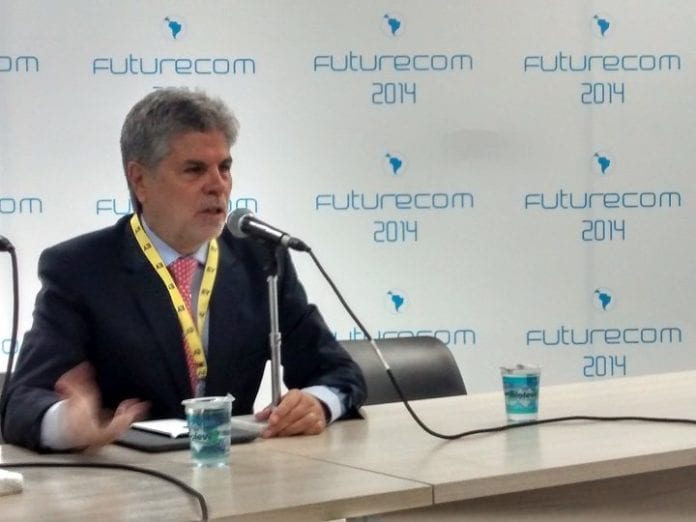SÃO PAULO — While waiting for regulatory approvals of its acquisition of GVT, Telefónica Vivo has not yet disclosed any details about how it will combine brands or make changes following the buyout. However, at this week’s Futurecom event, Antonio Carlos Valente, president of Telefónica Vivo, made it clear that by incorporating GVT, the Brazilian unit of the Spanish telecom group will become a stronger competitor against rival NET. It will also expand its coverage outside São Paulo state with Internet broadband and triple play offerings.
Speaking with members of the press at Futurecom, Valente said that currently the América Móvil-owned NET leads the Internet broadband market with a 69% market share in São Paulo and 49% of households across the whole country.
“GVT complements our footprint. We aim to become a new option for customers,” Valente said.
GVT’s current owner, France’s Vivendi SA, offers fixed telephony, broadband and pay-TV services in almost 150 cities and has a reputation for high quality service. Telefónica Vivo has a presence in all regions of Brazil with its mobile services, but its pay-TV and fixed broadband offerings are currently only offered in the state of São Paulo because of concessionary rules.
“GVT has an excellent brand, and we will need to administrate this asset well,” said Valente. When Telefónica bought Vivo some years ago, it faced the same issue, since the mobile carrier’s brand was strong and well-received by customers.
Among synergies, Valente said that both companies can learn from the other’s experiences in combining and using different technologies. Telefónica has put a focus on increasing fiber optics, and currently, it has nearly 300,000 customers in the state of São Paulo. By incorporating GVT’s pay-TV customers, Telefónica also expects to attain some discounts through price negotiations with content providers.
As for 4G implementation, Valente highlighted that the company has reached 100 cities with LTE coverage. “We also have the largest 3G coverage reaching twice as many cities as the second player [in the market],” Valente said, noting that Vivo’s 3G is at 3,230 cities.
The entire infrastructure, including fiber and mobile infrastructure as well as data centers, is being used as a base for Vivo’s digital services. It’s been a while since Telefónica started to move in the direction of becoming a digital telco. Its portfolio now comprises health, education, security, smart metering, finance and machine-to-machine, among other services.

